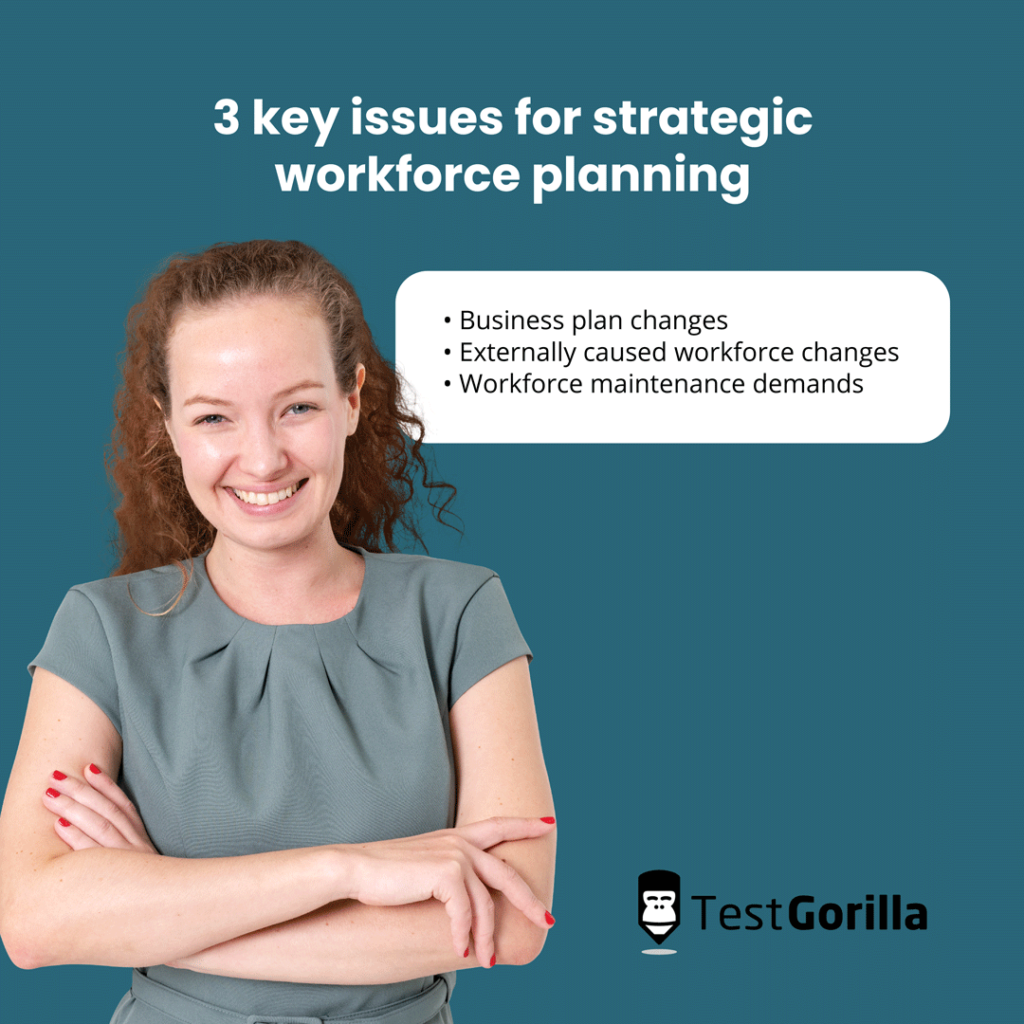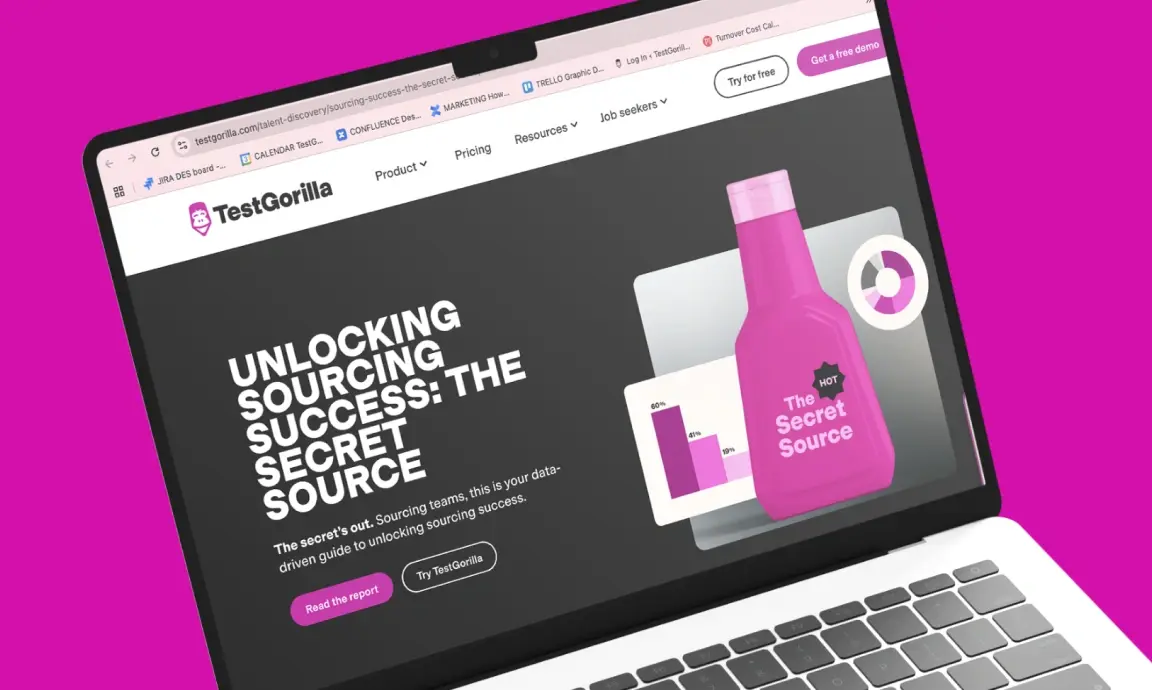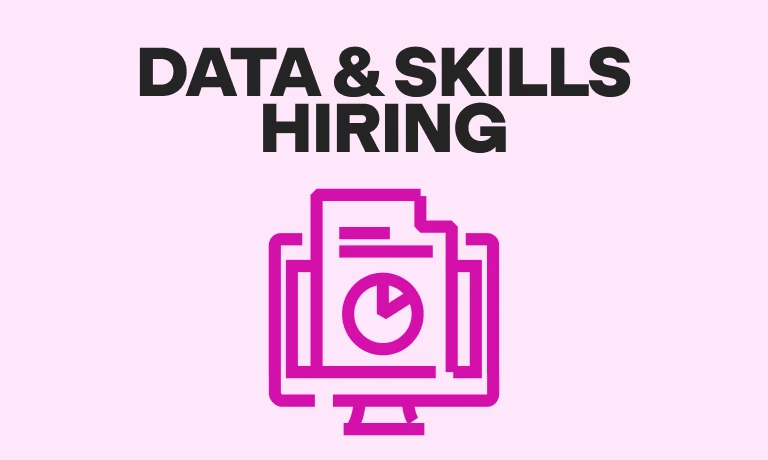Building a strong foundation with a strategic workforce planning framework
How prepared is your workforce to handle your business’s short- and long-term goals? Do you need to reassess your team?
It can be difficult to ensure that your team members are ready, but there’s one way to make sure your team can cope with the challenges associated with meeting your business’s objectives. This involves implementing a strategic workforce plan.
Strategic workforce planning helps hiring managers and HR professionals align their workforce with their organization’s business objectives. It may seem like a complex process, but following the right steps can ensure your business excels and reaches its goals.
Read on to find out what workforce planning can do for your business.
What is workforce planning?
Workforce planning is a systematic process that ensures your organization allocates the right individuals to your company’s roles based on their abilities and knowledge.
This involves analyzing and predicting the supply and demand of workforce talent in your organization.
What is a workforce planning framework?
A workforce planning framework outlines the sequential steps hiring managers use to plan their workforce requirements. Following the steps outlined in a workforce planning framework makes it simpler to address your business’s workforce requirements.
With a good workforce planning framework, you can identify the talent that can fill vacancies that arise or determine career progression routes within the business to improve internal recruitment goals.
Five steps are involved in a workforce planning framework, including the following points:
Setting objectives and planning the strategy
The first part of a workforce planning framework involves planning. Skilled and knowledgeable business leaders should create a constantly evolving blueprint. Although this will undergo frequent iterations, the plan should align the objectives of your business with your workforce planning goals.
To complete this first step, you may review your business’s annual performance, work activities, and long- and short-term goals to ensure they match your strategy.
Analyzing the workforce and skill gaps
Analyzing the workforce and skill gaps involves assessing your current workforce talent and considering how the requirements of each role may evolve. Once you complete your analysis, you can develop a specification for the types of workers and skills needed to accomplish your business requirements.
The best way to determine whether your team lacks any skills is by using skill tests. You can use the skill-test data and findings to determine which skill gaps you need to address to fulfill your potential workforce requirements.
Developing your workforce planning framework
The next step requires you to develop strategies to close the skill or talent gaps in your workforce. In addition to using skills testing to assess your current employees and potential candidates, closing any talent gaps may involve recruiting capable applicants, completing succession plans, developing training programs, and restructuring your business’s teams.
Implementing the plan
You should involve wider teams when implementing your workforce plan, including informing the human resources department and ensuring your staff understands their roles. This step also requires ensuring you have the right managers to effectively communicate any structural changes to your staff, coordinating with them to execute the plan smoothly.
Monitoring your workforce plan
A workforce plan should always improve over time, which is why you need to monitor it alongside business milestones. This may involve making adjustments when you notice any optimization opportunities. For instance, if employee turnover metrics increase over time, you may reconsider the skill gaps you need to fill and start the hiring process.
The best insights on HR and recruitment, delivered to your inbox.
Biweekly updates. No spam. Unsubscribe any time.
What is the benefit of workforce planning?
Workforce planning offers your organization many benefits, from understanding the number of employees required to complete your company’s workload to training employees correctly and handling attrition rates efficiently.
With a detailed workforce plan, you can hire the right number of employees using a “forecasting” method. This ensures you avoid wasting your budget by hiring too many new employees or missing the opportunity to fill urgent skill gaps by not recruiting enough.
What are the 3 key issues for strategic workforce planning?
Before you start your strategic workforce plan, there are three issues to consider, including your business plan or model, any externally caused workforce changes, and workforce maintenance demands. It’s important that you consider how these issues may impact your plan and your workforce.
Business plan changes – this refers to any changes in your business model or any reorganization of the company. Take note of any strategic business plans and initiatives before starting your workforce plan.
Externally caused workforce changes – these are the changes to the business that occurs due to external causes, such as supply shortages in the talent market and changes to the workforce demographics.
Workforce maintenance demands – these refer to enhancements and maintenance of the workforce, including retirement eligibility and frequent training demands.
Strategic workforce planning template
If you’re unsure how to implement a strategic workforce plan, check out our workforce planning template below.
Determine your business’s strategic direction
Consider the business’s short- and long-term missions, goals, and future objectives
Identify your organization’s short- and long-term challenges
Review any legislative or regulatory changes to your business
1. Short- and long-term goals of the business | (Your notes here) |
2. Workforce challenges (short- and long-term) | (Your notes here) |
3. Legislative changes to the organization | (Your notes here) |
Assess your current workforce supply
Consider whether the current workforce aligns with the business strategy
Find out the number of employees at each level of the business
Identify attrition rates and turnover metrics
Review how much of your team is eligible for retirement
Determine how you will replace employees who leave (internal or external recruitment)
1. Review of business strategy alignment with workforce | (Your notes here) |
2. Total number of staff at each level of the business | (Your notes here) |
3. Attrition and turnover metrics | (Your notes here) |
4. Retirement eligibility data for the workforce | (Your notes here) |
5. Employee replacement methods | (Your notes here) |
Review your current workforce demand
Check how many people your business needs to complete the workload
Calculate how much work you anticipate per year
Determine whether your workforce can meet the potential workload demands
1. Number of staff required for the planned workload | (Your notes here) |
2. Work anticipated per year | (Your notes here) |
3. Observations on whether the workforce can meet the planned workload | (Your notes here) |
Check for workforce gaps
Review your workforce demographic
Review the gaps between your talent supply and demand
Consider which gaps impact your business’s performance the most
Determine how to fill any skill gaps and consider how you would prioritize them
1. Demographic of current workforce | (Your notes here) |
2. Observations on gaps between talent supply and talent demand | (Your notes here) |
3. Gaps that affect the business’s performance the most | (Your notes here) |
4. Methods to fill skill gaps | (Your notes here) |
Implement your strategic workforce plan
Consider short- and long-term strategic workforce plan implementation approaches
Check whether the business has existing strategies you can leverage
Determine whether you need to implement several strategies simultaneously
1. Short- and long-term workforce plan implementation approaches | (Your notes here) |
2. Observations on existing strategic workforce strategies | (Your notes here) |
3. Observations on implementing several strategies simultaneously | (Your notes here) |
Create a workforce plan to strengthen your business
Creating a workforce plan may seem challenging, but with the template provided here you can start the planning process right away.
Addressing any skill gaps as part of your workforce plan may also seem challenging, but skill testing platforms such as TestGorilla simplify the process of reviewing potential talent gaps and planning toward filling them.
Sign up to TestGorilla today to start evaluating your workforce’s skills and creating a workforce plan to strengthen your business.
You've scrolled this far
Why not try TestGorilla for free, and see what happens when you put skills first.





















